The Acoustic Guitar
The Acoustic Guitar – A Basic Overview. We will try to cover enough info about the Acoustic Guitar to give you some insight on what’s available, and an idea of some of the differences ( such as Tone, Action, Styles, Costs, etc). This info should give you a better idea of what to look for when you go to purchase your first Acoustic Guitar.
Acoustic guitars come in many shapes, sizes, colors, styles, and tone.
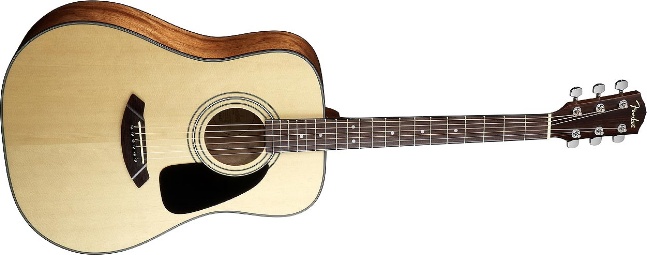 |
 |
 |
Here are some things you should understand and consider before buying an acoustic guitar:
The Sound:
There are so many different styles of Acoustic Guitars that have different “sounds” (tone) that you must take the time to listen to several of them before deciding on buying one.
VIDEO CLIPS OF ACOUSTIC, 12-STRING EXAMPLES ARE BELOW.
Not all Acoustic Guitars sound the same, if they did, there would only need to be “One” model, and all you would have to do is select the color. Since that’s not how it is in the “real” world…let’s learn something about acoustics. Go to a music store, sit there and try out all the Acoustics that you can. Even better, if you are a beginner, have the sales guy (who should be a guitarist) play something on a few Acoustic guitars to see what they sound like. Listen to the guitars sound to make sure the “tone” is exactly what you are looking for in an acoustic guitar.
“Playability” (The Action):
An Acoustic Guitar can look great, and even sound great, but if it is extremely hard to play and rough on the fingers – it may not be the guitar for you. It is very important that the “action” (how far the strings are from the fret board) is low and adequate for you to handle (without busting up your fingertips).
Note: If the action is extremely low, make sure you listen for “buzzing” on the different frets and / or “dead spots” on the fret board. Acoustics (with steel strings) are normally harder on the fingertips than Electric Guitars(especially for beginners).
Play the guitar, check the action, and make sure that the “Playability” is smooth and the “Action” is low. Action Handout Here!
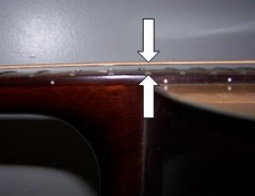
Two “General” Types of Acoustic Guitars:
Nylon String Guitars (Used in Classical / Flamenco Style):
Nylon string guitars are easier on the fingers than steel string guitars. The tone of a nylon string guitar is “softer” and the fret board is usually spaced “wider” than steel string guitars. Nylon strings do not add much “tension” to the neck, and are usually just “tied” to the bridge of the guitar.
Steel String Guitars (Used in Rock / Pop / Metal / Country)
Steel string guitars make up the majority of the Acoustic guitar world (the most popular type of acoustic). Steel string guitars come in 6 or 12-String models. Steel strings do add more tension to the neck of the guitar so the strings are usually fastened to the bridge using bridge pins.

Acoustics also come in several Styles:
Here is a short list to describe some of the most common styles (there are more styles to choose from).
Dreadnought
Describes a particular shape of the “traditional” acoustic guitar. The Dreadnought body style is larger and fuller, and plays a large part in the “bigger” sound of this guitar.

Archtop – Also referred to as “Carved” top.
Is simply a guitar body that has an arched (carved) top, and usually has sound holes (called “F” holes). Archtops are known for their “looks” and for their distinctive sound.

Cutaway
An area where the neck and body join together that has been removed (cut out) so that easier access to the upper frets is obtained. Lead players will then have easier access to the higher frets without having to twist or bend their fret hand to reach the higher notes.

Electric Acoustic
These are Acoustic guitars that have built in pickups (usually a piezo type pickup), just plug the guitar into an amplifier and start playing (some of these guitars also have tone / volume controls built in. Older models were prone to feedback, but the feedback problem has been corrected in the newer models.
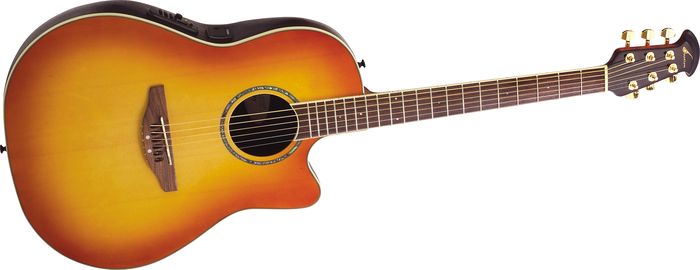 Acoustic Guitar Sound – Example – Click Here!
Acoustic Guitar Sound – Example – Click Here!
12-String Guitars
Of course we cannot neglect mentioning the 12-String guitar. The 12-string has been used in all styles of music. Most 12-strings are large, and can be difficult to tune (but once you get used to it, you shouldn’t have any problem). Changing the strings could also be a challenge, but the sound is incredible!
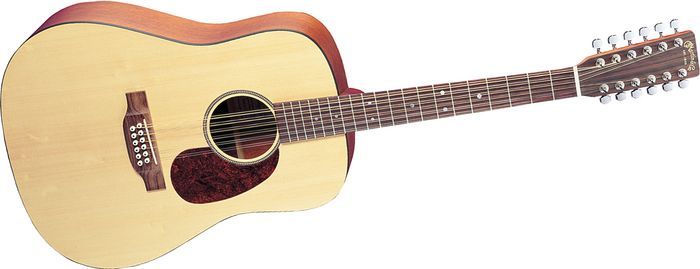
12-String Guitar Sound – Example – Click Here!
The “Color” (Will you get to choose a color?):
Although the color of the guitar will not affect the “tone” and / or “playability” you may have the option to pick the color (you’re the one who has to play it – and be seen with it – so you might as well pick a color that you like). On most models you may not get to choose a color (or the choice will be very limited), but if you do happen to get the choice – pick a color that you will feel “comfortable” with.
Plays great, sounds great, looks great = A very happy guitar player.
Acoustic Modeling Technology:
With todays technology don’t forget to ask about the Acoustic “Modeling” technology that is available. Line 6 made an Acoustic modeling guitar that had multiple guitar sounds programmed into them – such as Classic Vintage acoustic guitars, 12-strings, Flat top models, Dreadnoughts, Sitar, Banjo, Dobro, Alternate Tunings, and even a built in Capo! BUT – for some reason they stopped manufacturing them. It was pretty cool, all you did was flip a switch and you can got all these different guitar sounds, very simple, and they sounded incredible. But, there are tons of effects pedals that are available that use “Modeling” technology to simulate Acoustic Guitar sounds – if you are interested, check it out at your local music store (or on-line).
The Purchase:
When you purchase your new Acoustic Guitar (or any type of music equipment) you must feel “good” about the purchase. Don’t just be all “hyped up” that you have a new guitar, you really need to feel good about the purchase (no second thoughts, or feel unsure about it, etc). This is important – To walk out of the music store with a great feeling about your new guitar will be the final stage of the purchase. If you have a doubt, go eat some lunch, then go back to the music store, and keep trying guitars until you find the one you really want. Also, once you are ready to pay for the guitar don’t forget to ask the salesman to throw in some guitar strings, picks, or Fast Fret in for free. They may or may not do it, but it won’t hurt to try…
Common Mistakes Made:
a) Purchasing an expensive guitar on-line without playing it first is a very common mistake (it’s fine for beginners to purchase guitar combo packages on-line because they will pretty much all sound the same, and are perfect for beginners). We recommend that you “test drive” any expensive acoustic guitar that you are considering purchasing (go to a music store – get the guitar in your hands – play it – be the judge). Don’t take someone else’s word for it – what sounds good or plays good to someone else does not necessarily mean it will sound good or play good to you. Don’t take the chance…
b) Start Small – as a beginner, you should start with a very inexpensive guitar combo package. Don’t go out and buy a $1,800 guitar as a beginner – like the Acoustic shown below (left) – what if you decide not to play anymore – you will never get back the money you paid for it. Start small – like the Sample Acoustic Package shown below (right) or something similar… This way if you decide to stop playing, you should be able to get back at least half of the money that you spent on it. If you continue to play guitar and are ready to move on to something more expensive – then sell your beginners package and put the money towards your new guitar.
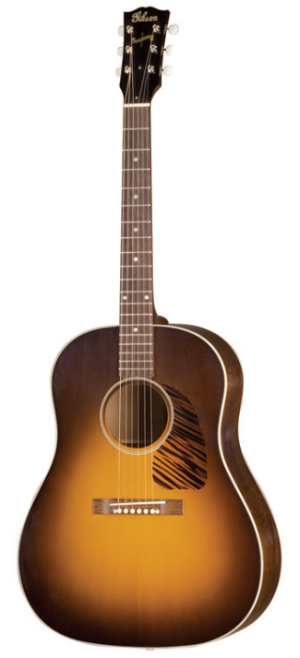 |
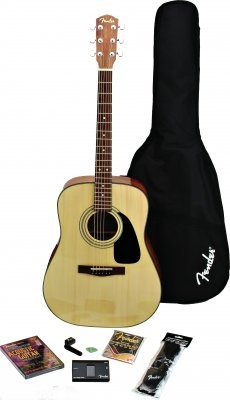 |
Remember that selecting a guitar is a “subjective” process, and the final decision should always be made by the person who is going to be playing it. This does not mean that you should not invite your musician friends to assist you at the music store – it just means that you should be making the final decision on your guitar purchase, and feel good about your decision…

